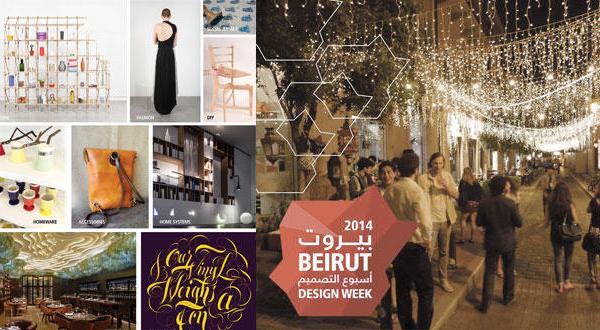Beirut, Asharq Al-Awsat—For the third consecutive year, Beirut Design Week will bring a host of talks, exhibitions, films and workshops to the Lebanese capital this week, showcasing the work of both local and international designers, and encompassing various fields such as interior design, architecture, jewelry, lighting, fashion and furniture.
The week kicks off on Monday June 9 in Beirut’s largest shopping area, Beirut Souks, and upscale residential area, Saifi Village, moving on to a number of other areas around the city, where more than 80 events will take place.
Beirut Design Week is the brainchild of two Lebanese designers and entrepreneurs: chief executive of Middle East branding agency TAGbrands, Maya Karanouh, and designer and social entrepreneur, Doreen Toutikian. They decided to launch the event in order to encourage the Lebanese government to acknowledge the importance of design as an industry, especially considering that Lebanon is considered a regional leader in this field.
Toutikian, who left Lebanon at the age of 19 to study design in Germany and Scotland, wrote a master’s thesis on the creation of the MENA Design Research Center, an organization which she and Karanouh now head and through which they organize Beirut Design Week. After returning to Lebanon, Toutikian sought the help of the private sector in trying to set up the organization and promote the importance of design in her home country. It was through these efforts that she was put in touch with TAGbrands, and then Karanouh.
Toutikian tells Asharq Al-Awsat she and Karanouh conceived the event as a platform to bring professional designers—as well as young people, beginners and students— together in a space where they could exchange expertise and knowledge, and to draw in prominent Arab and international designers and academics in the field.
But there is more to design than the usual suspects—fashion, furniture, lighting, architecture, interior design—and Toutikian says she and Karanouh want to open up the field to the public generally, to help them appreciate the impact of design on their everyday lives.
One unique workshop taking place at the event this year will examine the design of medical equipment used in hospitals, both for treatment and diagnostic purposes. The workshop will not only focus on the functional design aspects of such equipment, but also those relating to the patient’s experience. In the case of children, for example, they may be frightened by the look of the equipment used by doctors during treatment or diagnosis. More ‘child-friendly’ designs can therefore be utilized to help provide a less stressful ordeal for them, without any loss in the efficacy or functionality of the equipment.
Toutikian sees design as encompassing ubiquitous, though relatively unnoticed, aspects of everyday life. She sees the discipline of design as related to every product, object or artifact used by human beings, from the seemingly mundane—cups, dishes, spectacles—to more ‘obviously designed’ objects such as vehicles, planes and buildings. “People have started to become convinced that design is a part of their lives,” she says. “In Britain, for example, the local councils cooperate with designers on projects in their districts. We want our lives to be better and more beautiful through art and design. We want the government to support, recognize and sponsor these arts.”
But where the Lebanese government has been slow—Toutikian and Karanouh rely entirely on the Dutch and Danish embassies in Lebanon, and the British Council, for their funding—young people and students in the country have taken to the field with much relish. Design departments at Lebanese universities now produce graduates in the hundreds every year, with many others, like Toutikian, choosing to study abroad, making this year’s event highly anticipated.
Despite being smaller than some other regional showcases, Toutikian believes that it is Beirut Design Week’s uniqueness, and not its size, that is the event’s true selling point. Many of the larger, more well-known events and exhibitions, such as those held in Dubai, aim to give a platform for international designers to come to sell their products, she says, but at the same time they give scant attention local designers. “This is not the situation with Lebanon, which cannot be considered a lucrative market for senior designers who come from abroad to exhibit their products. Our status is totally different from Dubai. In Lebanon, we have numerous talented designers and university students who need us to help them launch [their careers]. This is the job of Beirut Design Week . . . We seek to make Beirut a hub for design in the region. We have the talent and the products, and we are working toward marketing them and making them well-known. This is our task.”
Beirut Design week runs from June 9–15.

